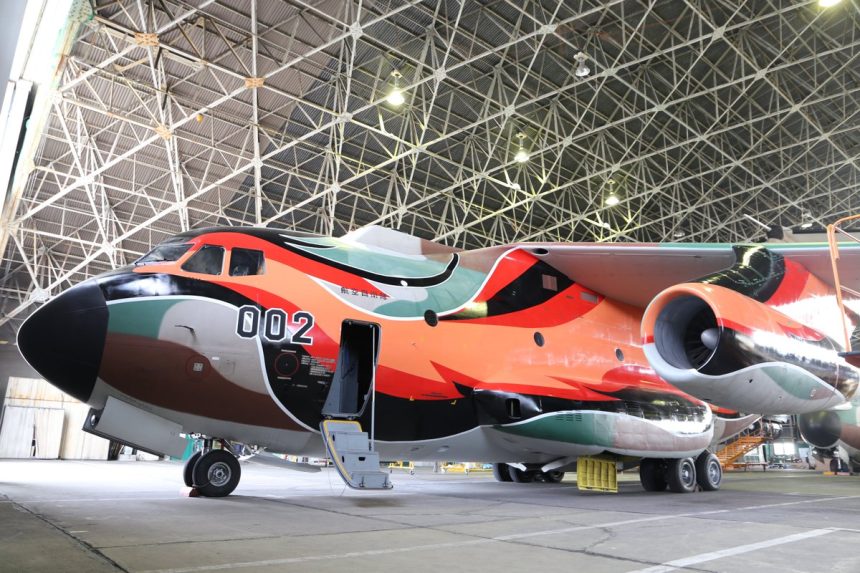The JASDF, historically famous for the stunning liveries of its aircraft, has revealed a brand-new paintjob for the Kawasaki C-1 as it gets closer to retirement, scheduled for the end of Fiscal Year 2024.
The ‘Phoenix’ livery
On Jan. 30, 2025, JASDF’s Iruma Air Base revealed a brand-new commemorative livery on their official X account, applied to the second Kawasaki C-1 ever produced, the aircraft with serial number 28-1002. The Kawasaki C-1 is a twin-engine military transport aircraft developed and manufactured by Kawasaki Heavy Industries for the Japan Air Self-Defense Force (JASDF).
「フェニックス」をモチーフにしたC-1輸送機登場❗❗
「永遠に飛び続ける」との想いが込めれられたC-1輸送機002番機をぜひ見に来てください😀#航空自衛隊 #入間基地 #航空機 #塗装 #記念 #不死鳥 pic.twitter.com/gsQqhdbTdV
— 航空自衛隊入間基地(Official) (@jasdf_iruma) January 29, 2025
According to the same X post, the special paintjob, featuring a phoenix, a symbol of immortality, is meant to convey the idea of flying forever. The livery features three main colors of red, orange, and black, and was painted over the regular tricolor (green, brown and beige) camouflage paint. It also features the message “C-1 Forever” on the left side of the fuselage, reminiscent of the “Phantom Forever” messages on some of the JASDF’s F-4 as they faced retirement back in 2021.
‘002’, which made its first flight on Jan. 16, 1971, and was delivered to JASDF on Mar. 20 of the same year, made its first public appearance in the commemorative livery on Feb. 3, 2025, when it conducted a high-speed taxi on Iruma’s runway 35. It then had its maiden flight in the ‘Phoenix’ scheme on Feb. 5, 2025, alongside another C-1 (030) and a YS-11EB.
C-1フェニックス ブレイク!#入間基地 入間基地 2/5PM pic.twitter.com/VRedsqAn23
— mania (@mania1515) February 5, 2025
A short history of the C-1
The C-1 is a medium-sized transport aircraft developed in Japan. The NAMC (Nihon Aeroplane Manufacturing Corporation), which was made up of several of Japan’s aerospace companies, designed the aircraft, and KHI (Kawasaki Heavy Industries) ended up being the prime contractor for the aircraft type.
The C-1 has a length of 29 meters, a width of 30.6 meters, and a height of 9.99 meters. It has a crew of five, with the capacity to carry 36 medical patients, 45 paratroopers, or 60 regular personnel. Its maximum payload is 11.9 tons, and the aircraft has a maximum takeoff weight of 45 tons. The aircraft has a range of 2,400 km without payload, or 1,500 km with 8 tons of payload, a minimum takeoff distance of 460 meters, and is equipped with two Pratt & Whitney JT8D engines.

Two prototypes, designated as XC-1s, were built and registered as 18-1001 and 18-1002. The C-1 had its maiden flight on Nov. 12, 1970, and serial production began in 1971. Ten years later, in 1981, the 31st and final C-1 was delivered to the JASDF.
The two prototypes remain still in service today, with 18-1001 re-registered as 28-1001 and 18-2002 re-registered as 18-2002. Of these, 28-2002 was re-designated as a C-1 and is utilized by 402 Hikotai at Iruma AFB near Tokyo, and now wears the special ‘Phoenix’ livery.
🐦🔥帰ってきた。入間基地 スマホ撮り
自分はこれで帰ります。 pic.twitter.com/Rd2JJbRvX8
— Nyon_nyon (@nyahhnon) February 5, 2025
As mentioned, 31 aircraft were manufactured, including the prototypes, and were used as the Japan Air Self-Defense Force‘s main tactical transport aircraft for over 40 years. Of these 31 airframes, some were converted into test beds and EW (Electronic Warfare) training aircraft, like the C-1FTB and EC-1. The aircraft also served as the base for the National Aerospace Laboratory’s Asuka experimental aircraft, which will be addressed later.
Due to aging, the C-1s have been gradually decommissioned since FY2011 and, as of the end of Jan. 2025, there are only four aircraft in the fleet: 001, the C-1 FTB, the first prototype of the C-1 now converted to a flying testbed; 021, the EC-1, an airframe modified extensively for EW training with equipment like the J/ALQ-5 Kai; 002, the second prototype for the C-1 and the aircraft adorned in the special livery; and 030, the 30th airframe delivered to the JASDF.
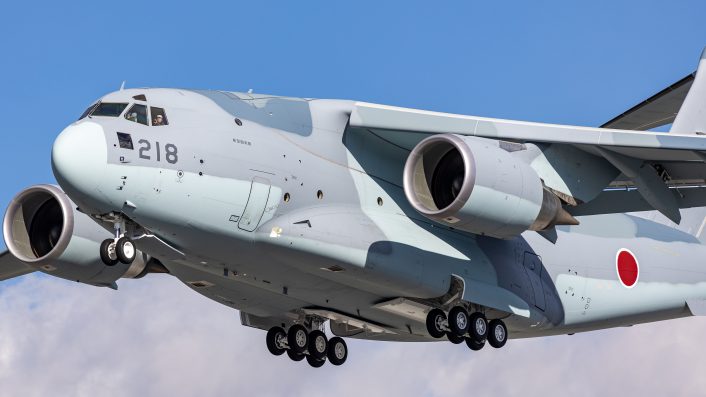
The C-1’s successor, the Kawasaki C-2, is also domestically developed by Japan. The first mass-produced airframe of said replacement was delivered to the Japan Air Self-Defense Force in Jun. 2016.
Variants of the C-1
There are two different operational C-1 variants, alongside the prototype XC-1s and three specially modified airframes (C-1FTB, EC-1 and QSTOL Asuka), each with a different designation.
When the U.S. ended its occupation of the Okinawa islands in 1972, returning the islands to Japanese rule, the short range of the C-1 limited its ability to carry a substantial payload from the majority of mainland Japan to Okinawa. This issue led to the halting of additional C-1 orders as the JASDF sought an aircraft with a longer range to reach the southern islands, diverting resources away from the C-1 program. Nonetheless, to address this problem, the final five C-1 aircraft sent to the JASDF were outfitted with larger internal fuel tanks, capable of holding an additional 4,730 liters, and were dubbed C-1As.
The C-1FTB, as mentioned, was modified from the first XC-1 and is a Flying Test Bed in service with the JASDF’s ADTW (Air Development and Test Wing). Its unique silver livery led to its affectionate nickname of “Gin-chan”; 「銀」(gin) means silver, while the word 「ちゃん」 (chan) is an honorific suffix used to indicate affection or closeness towards a person.
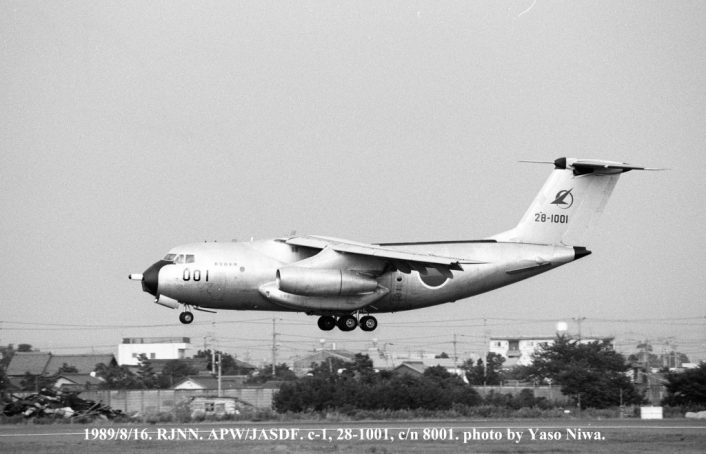
The second one-off variant is the EC-1, adorned with various bumps around the fuselage for EW equipment. In true Japanese fashion, this airframe also has a nickname – it is referred to as the ‘platypus’ by affectionate fans due to its unique nose, which also houses EW equipment. The EC-1 was reconfigured from the 21st delivered C-1, 78-1021, by Kawasaki in the time period between 1983 and 1984.
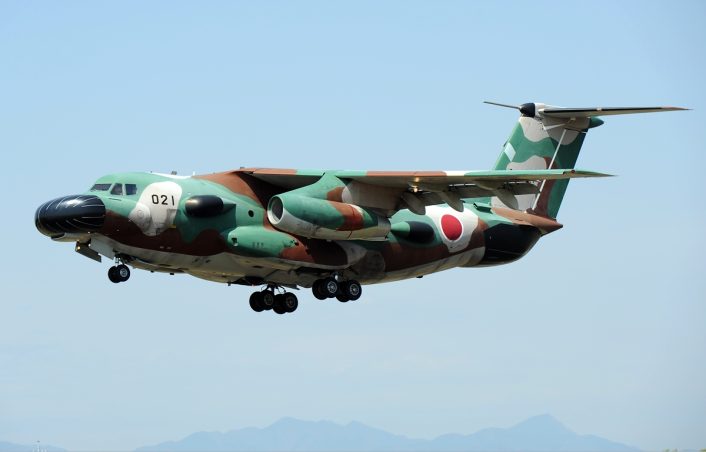
A lesser known, but arguably more unique, experimental QSTOL (Quiet Short Take-Off and Landing) aircraft known as “Asuka” was also produced. The NAL (National Aerospace Laboratory) ran the experimental program, which was flown by Gifu Air Base’s ADTW to assess the possibility for quiet STOL capabilities.
The design for Asuka’s airframe began in 1977, with assembly beginning in 1982 and the aircraft flying in March 1985. The flight testing phase lasted from Oct. 28, 1985 to Mar. 1989, with 170 hours of flight time distributed among 97 flights. The aircraft was retired, restored, and is now on display at the Kakamigahara Aerospace Museum, located near Gifu Air Base.
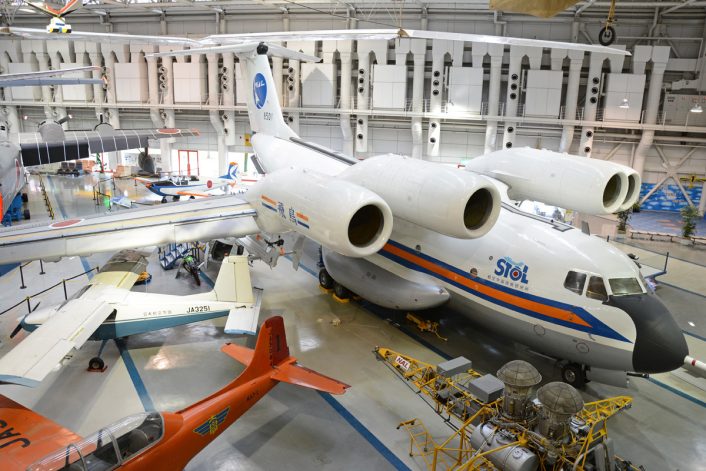
Other variants, such as AEW (Airborne Early Warning), tankers, and commercial transport aircraft, were also considered but cuts to the program’s funding meant that these projects never came to life.

